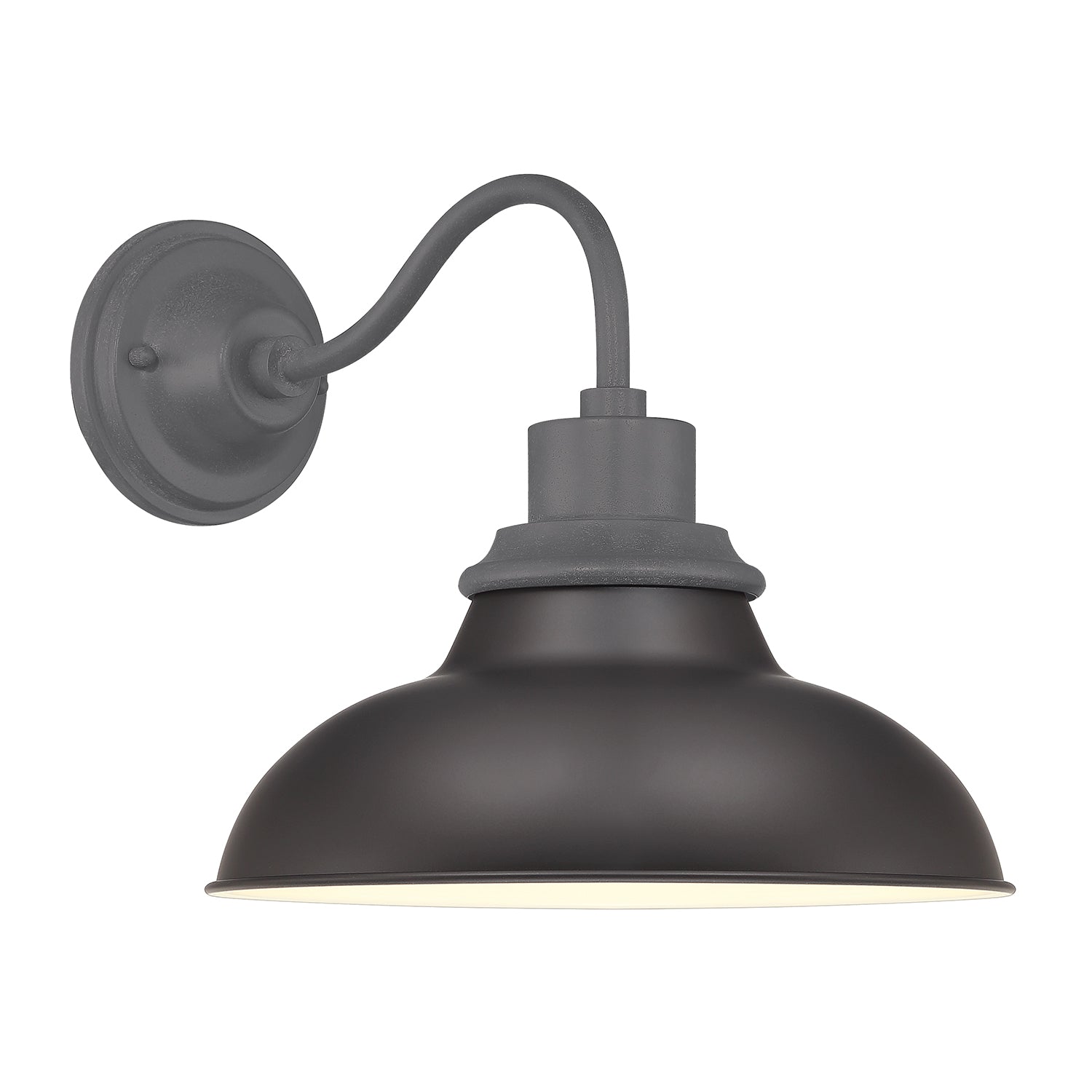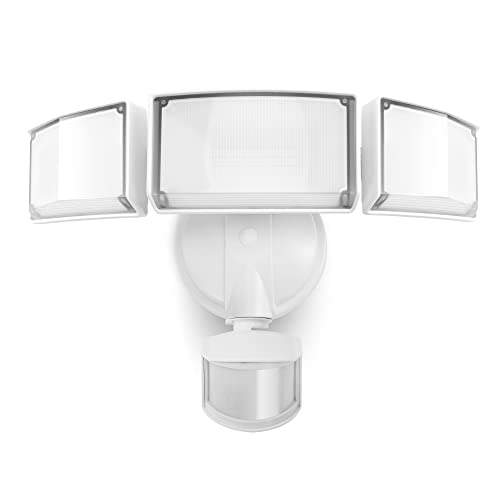How to light a driveway – expert lighting tips for a cozy welcome home
It's easy to overlook your driveway, so discover how to light it like a pro


With winter approaching, dark nights are drawing in. You may be finding that the lighting in your yard isn't working for your driveway. We'll soon be getting home in the dark, so it helps to have bright lights to see your way home.
However, it can be hard to nail the lighting on your driveway. Atmospheric lighting looks great, but can be too dim to use, while practical lighting can be stark and bare.
This is all you need to know about good driveway lighting, from the lights that suit different spaces, to the color and brightness you need.
1. Use path lights

The most common way to light a driveway is to use path lights. Path lights are perfect for driveways because you can line them next to the drive for neat, practical lighting.
This has two main benefits. The first is that it makes parking the car a little easier because you can see exactly where you're putting it. It also means you can see when you're going when you walk from the car to the front door.
If you live in the country, path lights are a great way to mark the entrance of your drive. It can be tricky to find the turning-off point on dark nights, and even once you're used to it, guests, mail carriers, and delivery drivers might not be able to find the entrance. Two path lights out the front of your drive are a simple way to mark the entrance in the night.
2. Try drive-over in-ground lights
In-ground lights are an ingenious way to light a driveway. Unsurprisingly, they sit in the ground, either completely flush or a 1/2 inch out of the soil or paving.
Design expertise in your inbox – from inspiring decorating ideas and beautiful celebrity homes to practical gardening advice and shopping round-ups.
Unlike path lights, these lights, also known as well lights, don't pose any obstacle. It's easy to clip path lights when you park, damaging the light and scratching your car. If you have in-ground lights in a driveway, this isn't a problem - you can drive right over them with no issue. They provide similar visibility to path lights but there's no risk of driving into them.
There are lots of options out there, especially solar inground lights. There are even inground light bricks which are incredibly easy to install. If your driveway is paved with bricks, just swap a brick out for a light.
However, bear in mind that in-ground lights are vulnerable to water damage. Path lights are above ground, so the only water damage they're likely to receive is from rain. In-ground lights are not only rained on but also must withstand water in the ground, so they can also be damaged by a rising water table or a flood.
In-ground lights are also harder to incorporate into your home's style. Unlike path lights, which come in many different styles, path lights are really just bare bulbs, so they can't complement your landscaping.
3. Stick to your security lights

The most cost-effective way to light a driveway is to use a large, bright security light. Unlike buying several sets of path lights or in-ground lights, you only need a single security light to light up your driveway. This can save you hundreds - if not thousands - of dollars. As long as you mount your security lights high above the driveway where they cast the most light and can't be tampered with, you have a simple solution to your driveway lighting.
Security lights are also motion-detection, which means that you don't need to worry about setting timers as you might with path lights or in-ground lights. The lights will turn on when you pull into the drive, automating the whole process. Premium security lights have dusk-to-dawn sensors which turn the lights on in dim mode at sunset too, so the drive always has some illumination.
However, there are a couple of issues with this method. These lights can look very stark and bright, so while they're excellent for security, they're less good for style. A security light can make your driveway look like a parking lot rather than a cozy pathway home.
Security lights also only offer a single source of light. Parking under a badly-placed security light can be tricky because the light shines in your eyes, and because they're so bright, they create high-contrast shadows that can be hard to see into, which might hide obstacles for your car.
Because they use motion detectors, security lights also won't help you find the driveway or park. While some models have dawn-to-dusk sensors, the dim mode can be very dim and offer little illumination.
4. Install exterior wall lights

Bright wall lights can be an excellent way to light a driveway. Unlike path lights, which you might drive into, or inground lights, which have a great risk of water damage, wall lights are out of the way and sheltered from rain because they sit under eaves.
With bright enough wall lights, you can light up most of the drive, making it easy to see what you're doing without compromising on style.
However, the issue with wall lights is that this method won't work if you have a long driveway. If you live in a suburban development, this method will work well, but more rural homes with large driveways will find that this doesn't provide enough light.

This sleek industrial light takes an E26 bulb, so you can fit it with a high-lumen E26 bulb like this at Home Depot for bright, practical lighting.
5. Spacing and placing

It can be tricky to figure out how to space your lights, but there are two tricks to bear in mind.
The first is obvious - your lights should be spaced so that the light from one light reaches the next, providing even coverage across the drive. This can vary depending on brightness, so see how far the beam from a single light reaches and use that as a guide for the next light.
The other tip for path lights is to use the height of the light as a guide. Head of Gardens Rachel Bull says 'If your light is 18" tall, for example, use that to work out where to place your lights. Your path lights should be the height of the light away from whatever you're lighting, so an 18" tall light should be 18" back from the driveway, and 18" from the next light. It's not a surefire method, but it's often a good rough guide.'

Rachel is a gardening editor, flower grower and floral designer. Her journalism career began on Country Living magazine, sparking a love of container gardening and wild planting. After more than a decade writing for and editing a range of consumer, business and special interest titles, Rachel became editor of floral art magazine The Flower Arranger. She then trained and worked as a floral designer and stylist in London for six years, before joining the Homes & Gardens team.
6. Keep the color warm

Your lights should be around 2500-3000K. K or kelvin, is a measure of color temperature. The lower the kelvin, the more like candlelight, the higher the Kelvin, the more like daylight. For example, office fluorescents are usually between 4500-6000K.
While the point of driveway lights is to brightly illuminate your drive to help you park, you don't want it to be too stark. A color temperature between 2500-3000K is perfect for driveway lighting. It's a warm white color that offers practical illumination but is also welcoming and cozy.
7. Ensure your lights are bright
Lumens are a measure of brightness, and you should always check this measure when buying lights. Many path lights and inground lights don't create proper lighting, because they're only around 10 lumens. This is especially true of solar lighting.
Your light fixtures should glow at at least 100 lumens to ensure practical lighting. 100 lumens is the lowest acceptable number - for bright lights, you need between 200-300 lumens.
Driveway lighting FAQs
Should I use solar or wired lights for driveway lighting?
It's best to use wired lights for your driveway. Solar lights can be a great way to save money, but they can be susceptible to water damage, and it can be hard to replace their bulbs if anything goes wrong.
Much of the advice for lighting a driveway also applies to lighting a garden path. You need bright, but gentle light that's practical without being stark or overwhelming.

As a gardens and lifestyle contributor, Alex makes sure readers find the right information to help them make the best purchase. Alex got his start in reviewing at the iconic Good Housekeeping Institute, testing a wide range of household products and appliances. He then moved to BBC Gardeners’ World Magazine, assessing gardening tools, machinery, and wildlife products.




![Color Changing Solar Ground Lights With 33ft Long Distance Remote Control - Flat Solar Lights Outdoor Waterproof - Pathway Lights Solar Powered for Yard Decorative Outside Lawn Walkway [6 Pack]](https://cdn.mos.cms.futurecdn.net/T2cyG65wUhVVjfnMxpmMwK.jpg)



